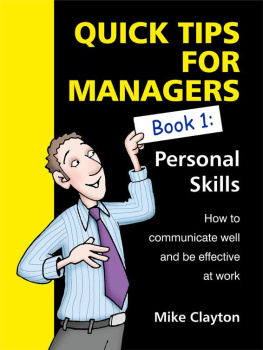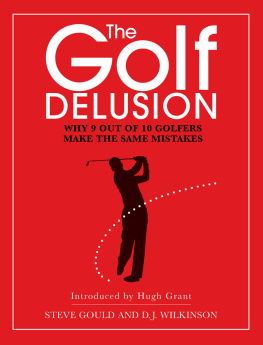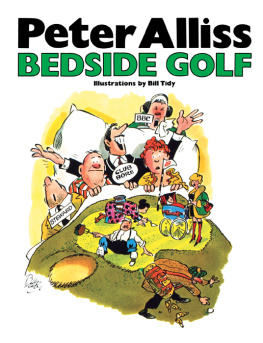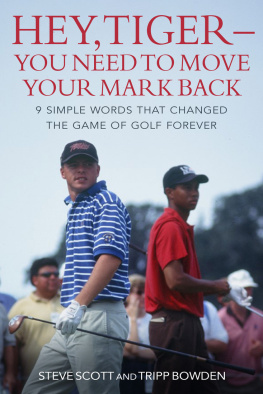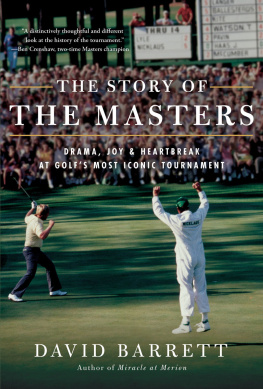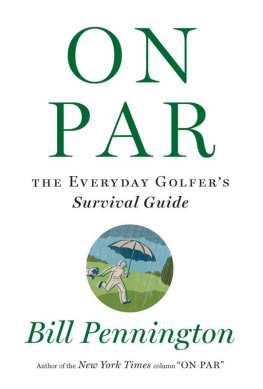


For Trevor Grant
CONTENTS
I first came across Mike sometime in the early 1980s when a few mates drove to Metropolitan GC one weekend to watch a Victorian Open. (I cant remember whether we jumped the fence or paid the entry fee; given we were students, probably the former.)
Anyway, Mikes reputation as a young firebrand had preceded him. Somehow we knew not just of his prodigious talent he had won the Australian Amateur in 1978 and was being spoken of by esteemed golf writer Don Lawrence and others as one of the countrys brightest prospects but also the fact he had something of a temper.
And no sooner did we begin wandering around the course than we came across Mike in trouble to the left of the 18th hole. His drive had finished perilously close to a tree and he wasnt looking happy. Clearly, if he took a big swish at the ball, he was going to damage his club on the follow through which is exactly what happened; his club bent beyond recognition after a full, lusty swing. The air was then full of the fruitiest language, which gave us all a chuckle.
From that rather inauspicious beginning, Ive come to know Mike well over the ensuing 35-odd years, watching him go on to win tournaments in Australia and overseas, appreciating his insightful golf columns in The Sunday Age, then coming to work alongside him at tournaments when I became The Ages golf writer in 1995. He has taught me much in the past 20 or so years, and disabused me of several of the bullshit views that Id held.
He loved nothing more than talking about golf and swapping stories after a days play with his fellow pros. His encyclopaedic knowledge of the game, especially the professional game in Australia, was extraordinary. And his opinions generally didnt carry many shades of grey; they were all black and white, and full of certainty.
That self-belief has served him well in his most recent incarnation, as a course architect, a job that necessarily attracts the intense scrutiny and, inevitably, criticism of hundreds of club members, some of whom wouldnt know a revetted bunker even if they fell into one but are happy to freely dispense their views anyway.
So when looking for a co-author for this book of essays, there was only one choice, really. It was the polymath golfer, writer and architect who could have written 100 essays blindfolded but, after much persuasion, confined himself to 22 and excellent, thought-provoking pieces they are.
Charles Happell, April 2018
* * *
In an era long past, newspapers wrote seriously about golf on a weekly basis and covered not only top professional golf but the best amateurs as well. Australian writers would travel to all the local tour events as well as at least two of the major championships, often reporting on the play from Wimbledon while they covered The Open Championship. The players got to know them well, and if a writer didnt know their golf, the players would quickly pick out an imposter.
The Age always had terrific writers and journalists who knew the game and how best to cover it, and alongside them all was the remarkable Peter Thomson, who was equally as good at writing about the game as they were but who could spot them more than a few shots a side. Charlie, a long-time member at Royal Melbourne and a good player, very quickly established a reputation among the players as one who both knew the game and could be trusted.
Todays players, especially in the United States, have lost some trust in the media and the game is less interesting for it, simply because they are so guarded with their real opinions. Geoff Ogilvy is one of the very few who is not, and as a consequence is a player writers gravitate to for a reasoned quote or a reasoned opinion. That he grew up playing at Victoria, the club of Thomson, and at the same time Charlie was The Ages golf writer, is likely why he understands better than any of his contemporaries how the relationship between player and journalist ought to work.
Charlie took over from Brendan Moloney, whod taken over from Trevor Grant, whod replaced Peter Stone, and before him was the legendary Don Lawrence, whod controversially gone over to the Herald Sun. Its hard to believe now but Charlie and the others were household names, certainly among anybody who played golf or tennis. The job as the golf writer at The Age was a prized and privileged position, especially in the era when Greg Norman was making headlines most weeks and if he wasnt making them, he was making them up.
Id been lucky enough to be offered some space in The Sunday Age by Steve Perkin, and my time writing at The Age coincided with Charlies time as the main golf correspondent. We got to know each other well.
I remember chiding Charlie gently in an Age column for believing Craig Parrys tale of putting woes one particular day at Huntingdale and reminding him never to believe a player moaning about the putter, especially one who putted as brilliantly as Parry.
Just remember, Charlie, I told him, we mostly all lie about our putting.
Mike Clayton, May 2018
PART 1
PLAYERS
His reputation as a gifted prodigy reached the pro ranks some time before he did. But when the teenage Adam Scott teed up in one of his first big tournaments, playing partner Mike Clayton got a first-hand glimpse of what all the fuss was about.
Have you heard of this kid? asked my playing partner, Mark Allen, on Cranbournes first tee just before we teed off in the 2000 Victorian Open.
I had heard of him and seen a picture of his swing in a magazine. Yeah, I think hes a pretty good player, I remember saying.
Adam Scott was 19, an amateur and presumably a little nervous. We were probably less nervous because we had done it all before and were in the old and cynical stage of our professional careers.
The opening hole at Cranbourne is a par five but it was barely playing as a long par four, easily reached with a drive and a middle, or even a short, iron. The kid was playing with a set of Bullet irons, a set so uncommon the only other player I ever saw use them was Simon Hobday, the extravagantly talented South African and one of the games real characters. Hobday must have been paid to use them, but Scott presumably was not.
I dont remember the driver he was using but his opening tee shot came out of the toe, started out at the right tree line before hooking far to the left and finishing in the trees.
Mark and I looked at each other, thinking the same thing: not very impressive.
We all just went about our own business, neither of us offering any words of encouragement as Adam made a mess of his chip out of the trees. He got his third shot far enough up the fairway to reach the green with an eight iron but it missed, although he did manage from the back of the green to get it down in two more for a six.
I distinctly remember saying to Mark, I guess hes not that good as we walked to the second tee.
The kid then hit a massive drive down the long par-four second and pitched a wedge into a few feet. Birdie.
The third isnt so strenuous a short hole, and an eight iron to 6 feet made it look even easier. Birdie.
The fourth is a short par four: an iron and a pitch and Adam knocked his second to a foot. Birdie.
The par five to follow he covered with another great drive, a beautiful long iron into the right bunker, from where he flipped a little splash shot out to a foot. Birdie.
Next page

